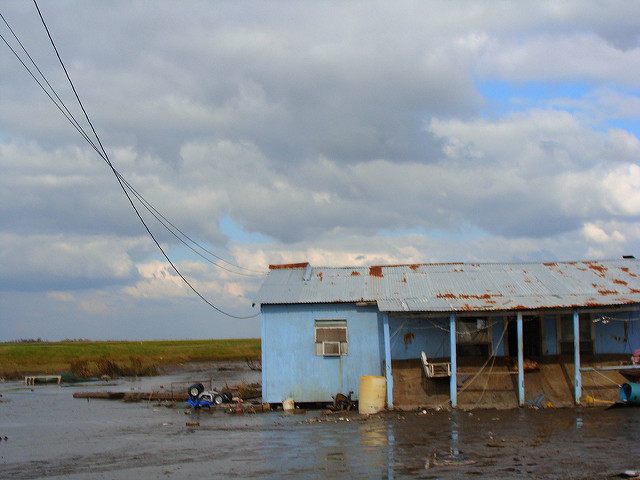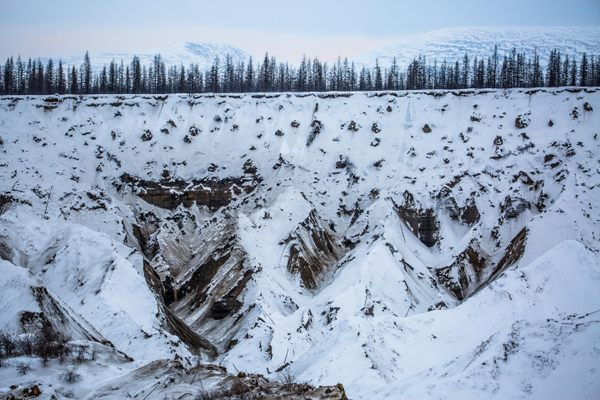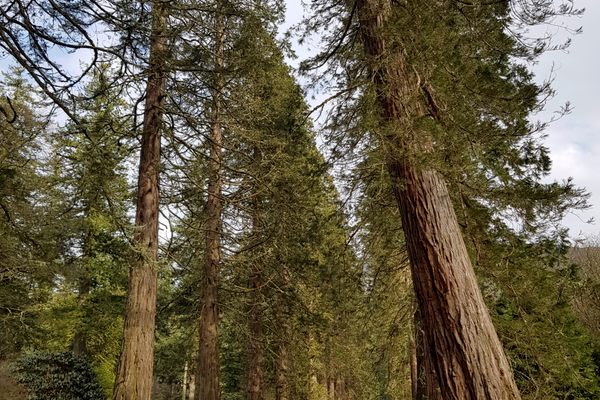Meet the Continental U.S.’s First Official Climate Refugees

The Isle de Jean Charles after Hurricane Gustav in 2008. (Photo: Flickr/Karen Apricot)
A slow-motion disaster is unfolding on the Isle de Jean Charles, deep in the Louisiana bayou, where a group of residents just received $48 million in federal funding to relocate.
These are the first official climate refugees in the lower 48 states.
The Biloxi-Chitimacha-Choctaw Indians have lived in southern Louisiana for centuries, and, since 1880, a band of them inhabited the Isle. But several factors, including climate change, the Deepwater Horizon oil spill, and a series of destructive hurricanes have meant that the Isle de Jean Charles has lost 98 percent of its land since 1955.
Many residents have already fled, and houses have been washing away into the Gulf of Mexico at an alarming rate, from 63 total in 2004 to just 25 remaining as of 2009. The island is expected to be completely submerged in 50 years.
While this group represents the first refugee group in the lower 48 states, the title of “first climate refugees” has been bandied about before in America. In 2013, headlines appeared about an Alaskan village called Newtok that was losing homes thanks to unstoppable coastal erosion.
Newtok residents have voted to relocate after government officials said their home island could be completely covered in water by 2017. But that relocation has so far stalled amid a lack of money (the resettlement is estimated to cost up to $130 million) and a political dispute that has left two sets of leaders vying for power. Both groups will be among the United States’ first generation of climate refugees. (Globally, the first official climate refugees appear to be a family from Tuvalu granted residency in New Zealand in 2014.)
The federal government’s award, which was announced in January, will provide for a new home for the community of trappers and fisherman, who have lived on the island since 1880. Tribal leaders and officials have not settled on a exact location for the new settlement, except to say that it will be further inland.
“Climate change is real and we must think more seriously about how to plan for it,” U.S. Housing and Urban Development Secretary Julián Castro said in a statement.
Chief Albert Naquin, told Indian Country Today last week that he was “very, very pumped” after getting word of the federal money.
“I’ve been working on this for 13 years,” Naquin said, referring to efforts to relocate that have been over a decade in the making. “I’ve taken some pretty big hits for doing that, and not just locally.”
The layout of the Louisiana tribe’s new community was inspired in part by the palmetto leaf, or tala in Choctaw, reflecting the symbolic importance of the palmetto tree to the tribe.

A palmetto leaf. (Photo: Flickr/Forest and Kim Starr)
The tree’s sturdy leaves have historically been used for everything from the roofing of houses to making toys for children. A town center is to be built at the base of the leaf layout, with homes fanning out at the tips of what would be the leaf’s branches. (Plans for the new settlement were outlined before the federal government announced its award.) In addition to a school, clinic, pharmacy, and small gym, the town center will also include space for tribal pow wows. The new home could be finished as early as 2019.










Follow us on Twitter to get the latest on the world's hidden wonders.
Like us on Facebook to get the latest on the world's hidden wonders.
Follow us on Twitter Like us on Facebook